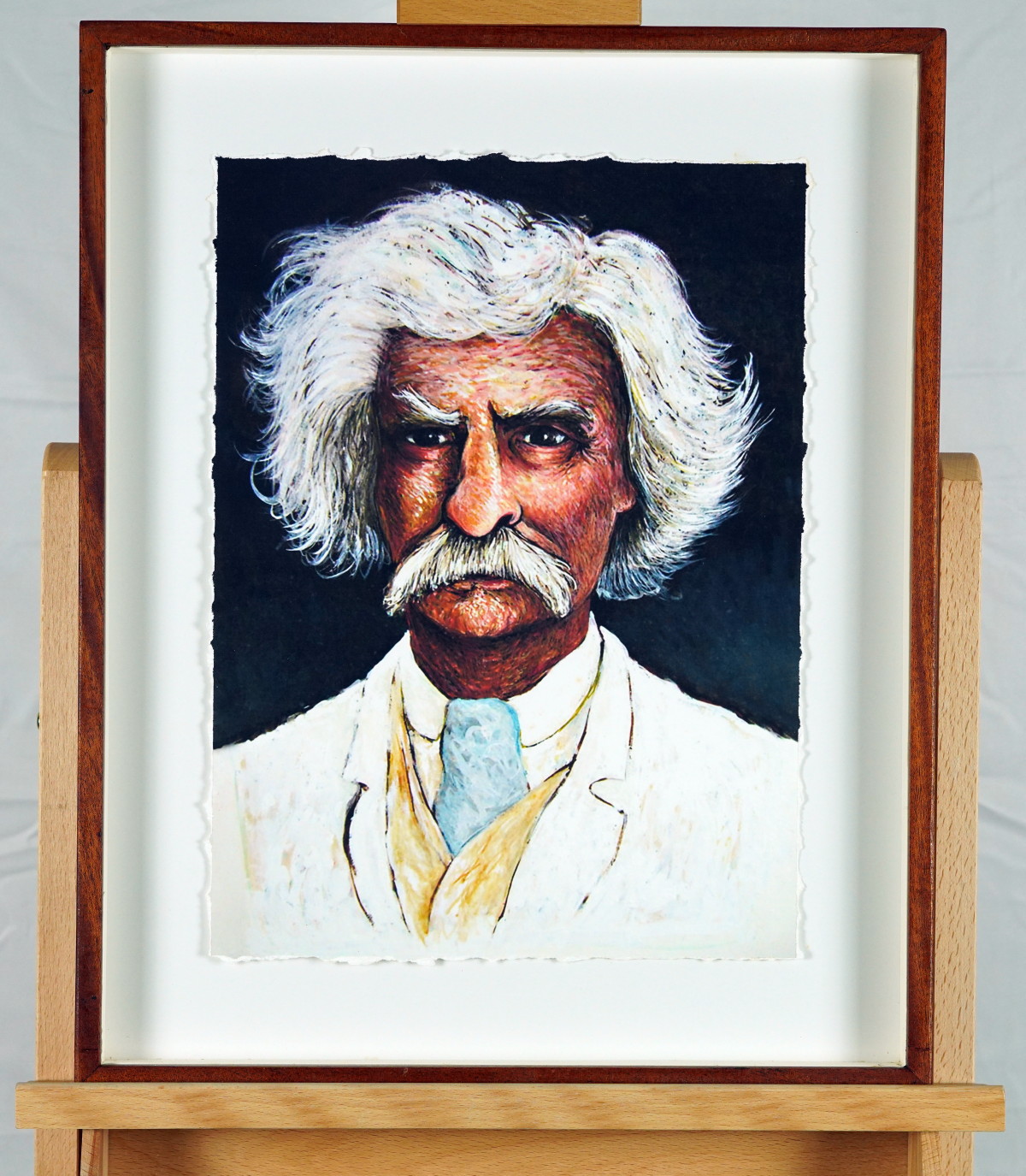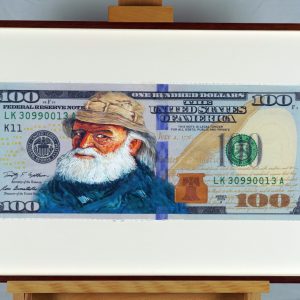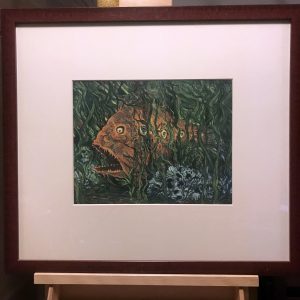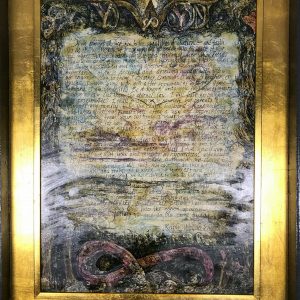Description
This giclee “Mark Twain” depicts an older man with wild, white hair and a pronounced mustache, wearing a white suit with a blue tie. The dark background contrasts sharply with the subject’s pale complexion, emphasizing his intense gaze. The expressive brushstrokes in the hair and facial features give a textured, almost rough quality to the work, which adds a sense of depth and character.In Zen Buddhism, this image could symbolize the clarity and simplicity found in old age, where one has reached a state of understanding and acceptance. The wild hair and piercing eyes suggest a mind that has let go of superficial concerns, embodying “beginner’s mind”—a state of openness and willingness to embrace each moment with fresh eyes, despite a lifetime of experiences.
The I Ching concept of Hexagram 52, “Keeping Still (Mountain),” aligns with the stillness and depth seen in this portrait. It represents a state of tranquility and meditation, where one’s inner nature remains undisturbed. The deep gaze of the subject can be seen as an exploration of one’s inner self, contemplating the larger truths of life.
Combining the perspectives, the portrait portrays not just a famous figure, but an emblem of wisdom, introspection, and timelessness. The unruly hair, textured strokes, and piercing gaze speak to a life lived fully and reflect a balance between chaos and stillness, engagement and withdrawal.
This piece could be connected to Expressionism with its visible brushstrokes and emotional intensity. There is also a suggestion of Realism in the detailed rendering of the man’s facial features. The work is reminiscent of portraits from the 19th century that aimed to capture not just physical likeness, but the essence of the individual’s character.
The original “Mark Twain” was featured in his Yes Retrospective, as well as, in volume III of the monograph Bob Camblin N Complete Workes.






